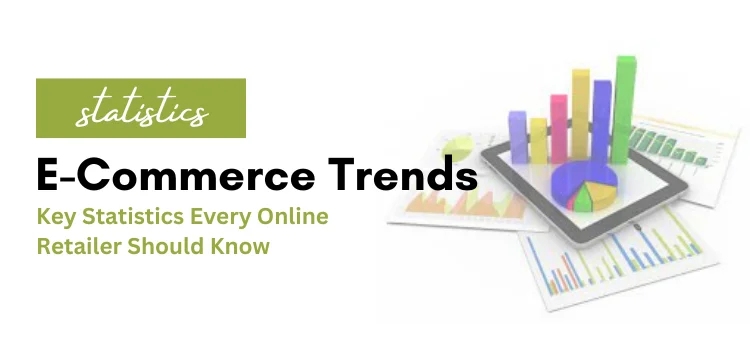E-Commerce Trends: Key Statistics Every Online Retailer Should Know
E-commerce has seen significant growth, and retailers need insights to stay competitive in the online market.
These are some of those insights, ecommerce trends, and key statistics you need.
E-Commerce Trends and Key Statistics
- Global E-Commerce Sales Growth:
- E-commerce sales have been steadily increasing over the years.
- According to Statista, global e-commerce sales amounted to $4.28 trillion in 2020.
- Mobile E-Commerce:
- Mobile devices play a crucial role in e-commerce transactions.
- Mobile commerce (m-commerce) accounted for a significant portion of online sales.
- In 2020, mobile e-commerce sales accounted for approximately 45% of total e-commerce sales worldwide.
- Retail mobile commerce accounted for 41.8% of sales in 2022 and is expected to account for 43.4% of total retail ecommerce sales by the end of 2023, InsiderIntelligence.
- Impact of COVID-19:
- The COVID-19 pandemic accelerated the shift towards online shopping.
- Lockdowns and restrictions led to a surge in online retail activity.
- E-commerce sales growth saw a notable increase during the pandemic.
- Popular E-Commerce Categories:
- Certain product categories have experienced higher demand in online retail.
- Categories like electronics, fashion, beauty, and home goods are among the most popular.
- Cross-Border E-Commerce:
- Cross-border e-commerce involves buying products from international online retailers.
- A significant percentage of online shoppers make purchases from foreign websites.
- This trend is influenced by factors such as product availability, pricing, and unique offerings.
- E-Commerce Marketplaces:
- E-commerce platforms and marketplaces are dominant players in the industry.
- Platforms like Amazon, Alibaba, and eBay attract a substantial portion of online shoppers.
- Personalization and AI:
- Personalized shopping experiences are becoming more important for customers.
- AI-driven recommendations and tailored content enhance user engagement.
- Approximately 80% of online shoppers are more likely to make a purchase when offered a personalized experience, according to Epsilon’s newer research findings.
- Social Commerce:
- Social media platforms are being utilized for direct shopping experiences.
- Shoppable posts and integrated payment options facilitate social commerce.
- Social media-influenced purchases are on the rise.
Conclusion
Ecommerce, e-commerce, dropshipping, or … whatever else you are used to are all types of the ecommerce business model and are effectively driven by similar statistics and insights.
Artificial Intelligence (AI), personalization, and social commerce are just a few of the things you need to keep a tab on to remain competitive.

